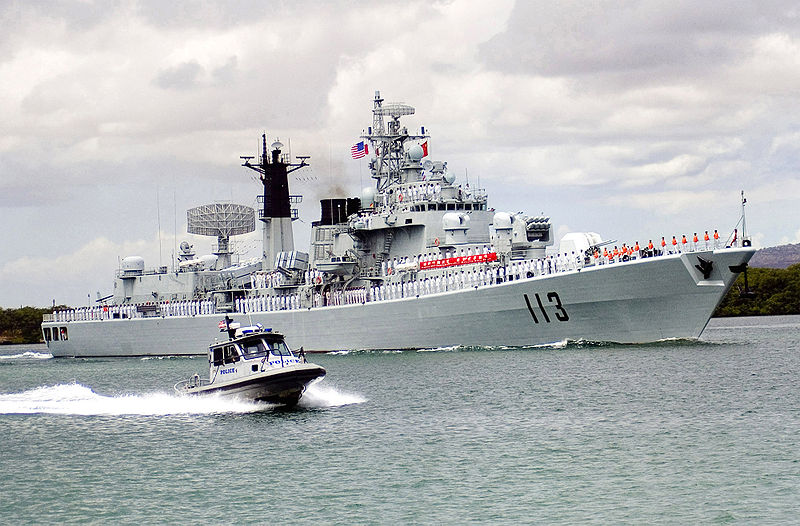
Welcome to MSW’s Scuttlebutt! Here’s the news for the day.

MoD Takes Delivery of QinetiQ's PACSCAT Technology Demonstrator
Source: QinetiQ
Following the successful completion of initial manoeuvring and propulsion trials, QinetiQ’s PACSCAT (Partial Air Cushion Supported CATamaran) Innovative Solution Demonstrator Craft (ISDC) was accepted as a trials vessel by the UK Ministry of Defence (MOD) on 10 August. It will now undergo a series of tough practical evaluation trials through to the end of 2010 at the Royal Marines facilities at Instow, Devon.
QinetiQ was awarded the contract to manage the design and build of the PACSCAT landing craft ISDC in September 2007 and working alongside Griffon Hoverwork Ltd at their base in Hythe, Southampton, has just completed a series of contractor evaluation trials that included spending in excess of 100 hours at sea. The trials saw the team progressively operate the PACSCAT ISDC at unloaded speeds exceeding 30 kts in Sea State 2. An MOD crew were also trained to operate PACSCAT, and operating procedures were endorsed by Flag Officer Sea Training (FOST) – the Royal Navy team that provides operational sea training.
"The handover is the culmination of many years of hard work and dedication to develop a new type of fast and functional landing craft,” explained Chris Ross, chief naval architect at QinetiQ. “The PACSCAT ISDC is generating interest in the military and commercial sectors where customers are looking to incorporate the innovative partial air cushion concepts into their own future vessels to enable them to benefit from higher speeds, heavier payloads and manoeuvrability.”
The contractor evaluation trials demonstrated that the PACSCAT solution could operate within the required specification. The MOD will now undertake extensive trials – which QinetiQ will oversee – designed to further understand the vessel’s capabilities with vehicles embarked. The trials will test PACSCAT's ability to perform a variety of roles focussed on the potential advantages of low and variable draught (for example in situations where high speed and high payload capacities are required in conjunction with exceptional beaching qualities.)
On completion of trials and as part of the Fast Landing Craft Concept Phase, the MOD will conduct a cost and performance-based appraisal of this solution with other options determined in the MOD Fast Landing Craft Design Solutions Study.
The high speed, all aluminium PACSCAT ISDC vessel is 30m long, 7.7m in the beam, has a design vehicle payload of 55 tonnes and an approximate loaded weight of 175 tonnes. It is propelled by twin MJP water jets, driven by Diesel engines manufactured by MTU.
The fast landing craft design requirement is to off-load front line vehicles from Royal Navy amphibious ships to the beach. The Innovative Solution Demonstrator Craft is designed to test at full scale the hydrodynamics of the PACSCAT hull form and to investigate its feasibility to deliver significantly faster speeds than traditional landing craft. The vessel makes use of the PACSCAT concept originated by John Lewthwaite of Independent Maritime Assessment Associates Ltd.
M. Star incident is a terrorist attack – expert
Source: Maritime Bulletin
Responsibility for the incident happened to Japanese supertanker M. Star on July 28 in the Strait of Hormuz was claimed by Al-Qaeda-led terrorist group Brigades of Abdullah Azzam, Mikhail Voitenko, editor–in-chief of Maritime Bulletin said to the Central Navy Portal.
According to him, on Aug 4 it was a post on a jihad-oriented website that the tanker was attacked by undisclosed suicide bomber. Members of the terrorist group suppose that attempts of Saudi Arabian authorities and NATO military experts to conceal the true cause of the tanker damages are connected with fear of panic, although oil price has already reacted on that terrorist act. Strategic goal of the group is to wreck world economy and to provoke chaos. Numerous Islamite groups bear the name of Abdullah Azzam.
Mikhail Voitenko comments
Appearance of the tanker damages look like nothing but external explosion. Versions of killer-wave or onboard explosion are frivolous. If the tanker was really attacked, that is hardly pleasant news. Although the military deployed in the region will be most likely capable to provide safe navigation in the Persian Gulf and the Strait of Hormuz, it looks too dangerous to sail over there – terrorists within the Gulf and pirates outside it. Of course, there is an assumption that the group purposely took responsibility with a view to become notorious, but on the other hand, terrorists have repeatedly launched treats against shipment in the Strait of Hormuz. As the phrase goes, "ask for trouble".
I am anxious to hear any loaded words from the Russian military, even if their appraisal is based only on those few pictures and poor accident history. Speaking of the effects on world economy, terrorist acts in the Persian Gulf and the Strait of Hormuz are more horrible than all Somali pirates.

1942 Raid on Makin Atoll
Today’s is the 68th anniversary of the 1942 Raid on Makin Atoll. Here is a look at the famous raid.

USS Nautilus (SS 168)
Today’s website is the USS Nautilus (SS 168). Enjoy.
This Day in U.S. Naval History
1812 - Frigate President captures British schooner L'Adeline in North Atlantic.
1942 - Submarines USS Nautilus (SS 168) and USS Argonaut (SS 166) land 222 Marines on Makin Island, first amphibious attack made from submarines.
1959 - Adm. Arleigh Burke re-appointed as Chief of Naval Operations (CNO) for third two-year term, serving longest term as CNO.
1962 - Navy's first hydrofoil patrol craft, USS High Point (PCH 1) launched at Seattle, Wash.
Photo of the Day

The Chinese Navy destroyer Qingdao (DDG 113) transit through the Pearl Harbor channel while being escorted by a harbor patrol boat as it arrives for a routine port visit.
Gator











